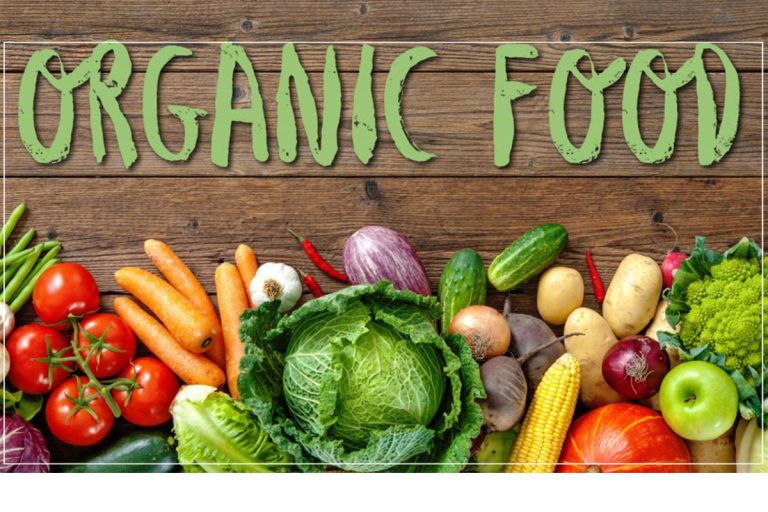
The use of these harmful agricultural inputs has created large industries, vested interest groups, rendered hardworking and sturdy farming communities ease-loving.
Gulsher Panhwer
Older people would go nostalgic about the quality of simple food they enjoyed in past. The aroma of standing paddy crop and cooked rice one sensed from miles. Mouth-watering organic vegetables, fish meat, mutton, beef, poultry and their superb deliciousness they tasted. Even our generation tasted these during 1980s when overuse of pesticides, weedicide and fertilizers were not in full use. Neither the hybrid seeds had intruded and made inroads in every town and village. True the agro-technological development has addressed the nightmares of Malthus and his ilk who during industrial revolution had feared that population explosion would cause unprecedented food shortage, droughts and ultimately would result in great miniseries for human race. Food production multiplied by green revolution with wide use of machinery and modern irrigation system that meet the food needs of growing population. However, introduction and use of fertilizers and pesticides further increased the agriculture output but also extracted heavy toll in shape of environmental degradation and effects on human health, animal kingdom and food chain are enormous.
The use of these harmful agricultural inputs has created large industries, vested interest groups, rendered hardworking and sturdy farming communities ease loving. Landlords want quick bucks from overuse of these poisonous harmful inputs on such an extent that it is nearly impossible to reverse their use. Moreover, identical fake pesticides have further aggravated the situation. The agents of pesticides are unleashed to every nook and cranny of the country to sell this poison. Now this is common knowledge that overuse of pesticides and fertilizers has resulted in penetrating every inch of land and water resources.
One silver lining is that TRDP, Sindh based Rural Development Program has been striving to introduce organic and nutrient imitative in Jamshoro and Dadu districts since 2018. under EU Supported program for improved Nutrition in Sindh, the TRDP trained agriculture entrepreneurs from each villages of focused area are running farmer field school, providing best verities of seed for growing vegetables, at household and village level, establishing nurseries of highly nutrient tree moringa providing zinc fortified wheat seed to the selected farmers who in return provide the seed to other farmers for multiplying affect, promoting villages based fish pond and poultry etc.; all the above imitative are geared to discourage usage of pesticide and weedicides and promote organic food production at community level to fight the malnutrition in Sindh.
Thus on above pragmatic note, although it is fact that this spree is irreversible but its use can be reduced and some pockets of land mass still untouched or less touched by this deadly use can be protected. Tharpakar and Kachho are only desert areas in Sindh province where pesticides, fertilizers and other chemical agricultural inputs are not used or are rarely used. The highly rich sandy-loamy texture of the soil here can produce both peculiar and common food corps without any use of fertilizers, pesticides and weedicide chemical inputs. These crops include Bajhara (mostly grown in Thar), sorghum (juwar), cluster bean (guwar), tenda and other food crops and vegetables. Besides these organic crops, naturally grown wild mushrooms, chebhars, beans of kandi tree and other naturally gown food items also have high potential for promoting organic food products. These crops are gown on monsoon rain water which did not carry pesticide ingredients and not touched by industrial and home wastage mixed canal water.
The taste of these organic crops is superb. Furthermore, shrubs grown in these areas have great medicinal potential including making organic pesticide and also can be used in preparing medicines.
Marjory of our famers and business community involved in grain trade and grain exporters are unaware that there is huge demand in Europe and other developed world for these organic crops. There is need to provide knowledge about the markets with high price of the organic crop products to the farmers, local and national business people and exporters. The local and national nongovernmental organization working on agriculture and agriculture research institutions as well as Sindh agricultural extension department and other stakeholders can join hands in conducting research, trainings on value addition, packing, food perseveration and storage. And this way the growers of the organic crops can earn handsomely.
Other area needing promotion and development is livestock and poultry. Thar meets 90 percent of milk, meat, hides and other byproducts of Sindh province. But livestock faces many problems including shrinking of natural pasturing area called gouchers which are being occupied by powerful people in Tharparkar, according to locals, the Thar coal development project is also resulting in impacting natural environment negatively including distributing natural grazing ground for livestock. The roads in Thar without side fences are also proving killing fields for livestock. Besides addressing above issues, new more productive livestock breeds should be introduced. At present chemical harmful to human health are used to prevent milk from splitting during its transportation to major cities. Farmers should be trained on healthy methods of milk preservation and making and packing milk by-products, hide and fur. During old times people used to offer milk and it’s by products like lasi , butter and Mahi to the guests and neighbors and extra lasi and butter/ghee was sold into market. Village Kando Babar and other villages in Kachho and Thar used to be centers for these products. After using animal meat and mutton during public events like marriages ceremonies, the livestock fat was boiled, melted and converted to Ghee. People used original ghee from animal fate or butter for household cooking, making sweets and cooking food during marriage and other community events and cultural ceremonies. The food products made from sacho or original ghee were highly tasty and full of energy. But after introduction of now highly impure ghee, mushrooming of tea shops in every nook and corner of the province, the milk, meat mutton and ghee from butter are found in little quantity and in bad quality purity and plenty are relic of past. New tendency of mixing chemical in milk is another horrendous trend. According to mainstream and social media reports, the chemical is put in water and after shaking it is converted into white liquid and is sold and used as milk. Same is true with poultry industry, the poultry grown at farms is expensive and tasteless. There is also need to revive the home grown poultry culture which meet the family protein and dietary needs and also save family income.
All this highly time consuming, cumbersome but vital for society’s health and wellbeing will need political will and steadfastness to resist vested interest. But if undertaken by visionary leadership from all concerned stakeholders, this initiative of promoting organic food corps, livestock and poultry not only can bring economic dividends, help in increasing livelihood, health of the farming communities and traders and also help in improving environment and address climate change issues on great extent.
_____________________
 Gulsher Panhwer is a freelance writer mostly touching the environmental, cultural and such other issues. He can be reached at gulsherp@yahoo.com
Gulsher Panhwer is a freelance writer mostly touching the environmental, cultural and such other issues. He can be reached at gulsherp@yahoo.com